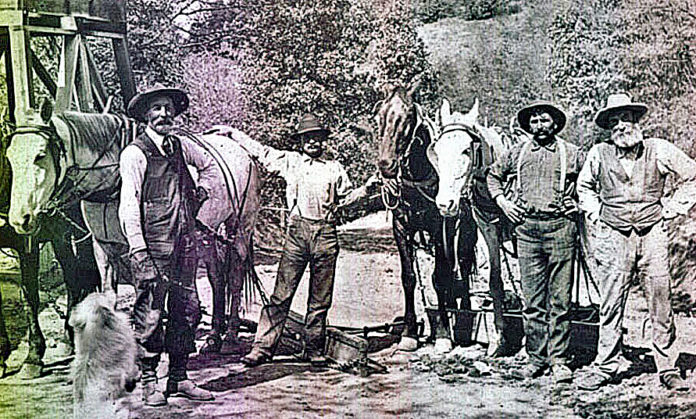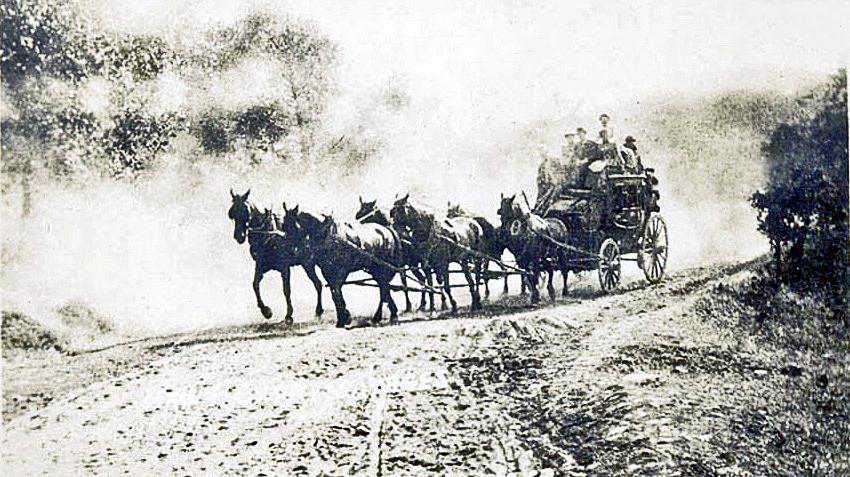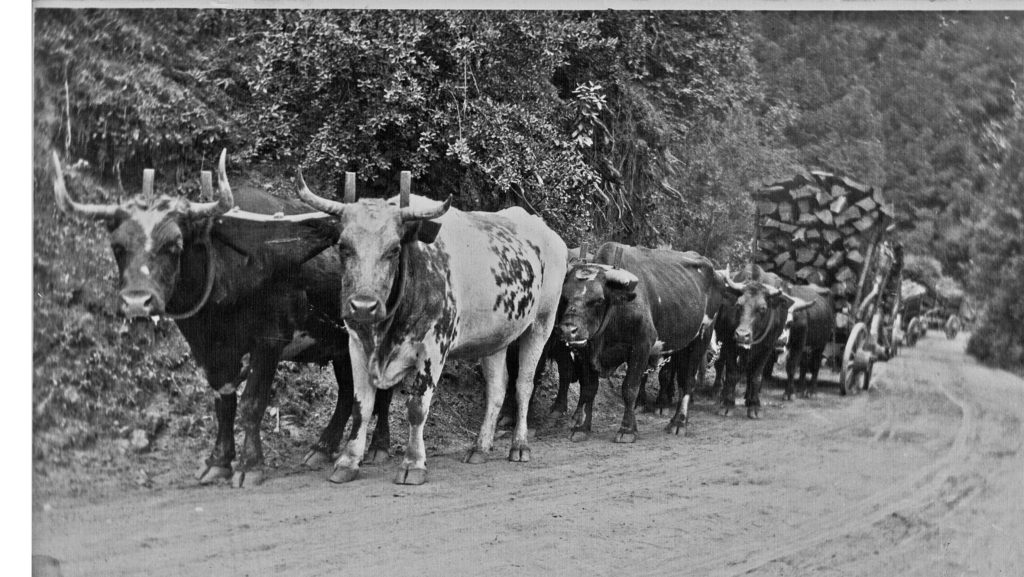
—This is the first in a two-part series.
Summer is here, accompanied by the usual traffic gridlock, so let’s all take a deep breath while I share the mostly forgotten history of our much maligned Highway 17.
If you think traveling over the hill is an ordeal today, imagine what it was like in the late 1800s. Your stagecoach ride would be a slow, dusty, bone-rattling and sometimes dangerous journey. Your coach might get stuck in the mud in the winter. Or, your horses might panic at the sight of a snake—and take you careening over the edge. A typical trip from San Jose could take all day.
The first roads into the mountains were primarily for logging. In 1848, early settler Zachariah “Buffalo” Jones purchased a sawmill near the future town of Lexington and claimed squatters rights to thousands of acres around it. Nicknamed “Buffalo” for his booming voice, Zachariah built a short logging road to his mill and demanded outrageous tolls for the right to pass.

To provide greater access to mountain redwoods and to break Jones’ monopoly, citizens petitioned Santa Clara County to construct a road all the way to the Santa Cruz county line. In 1857, the County awarded a charter (or contract) to the Santa Cruz Gap Turnpike Joint Stock Company to construct a private toll road, which would become public after 20 years.
In 1858, Mountain Charlie McKiernan and his neighbor Hiram Scott, were awarded a contract to build a similar toll road from the summit to Hiram’s rancho, which encompassed much of present day Scotts Valley. With roads on both sides of the hill, McKiernan’s home near the summit became a popular stagecoach stop called Halfway House. Charlie’s wife Barbara cooked meals for their guests, while he helped with the horses.
To collect tolls at the Southbound entrance, Scottish immigrant James “Pappy” Kennedy and his wife built a combination home and toll house where James worked as the official Tollgate Keeper. The small rebuilt structure on the corner of Wood Road and South Santa Cruz Avenue is a replica of that original house.

When the turnpike company insisted on collecting tolls even after their charter expired in 1877, the teamsters who drove wagons and stagecoaches were furious and refused to pay. They accused Kennedy of extortion and used their powerful horse teams to pull down the toll gate.
After the gate had been forcefully removed and replaced several times, citizens stood guard to prevent the turnpike company from rebuilding it. Several hundred people demanded that the County declare the entire road a public highway, which they did in 1878. That didn’t stop the Company from spending years in court trying to reestablish what had been an extremely profitable enterprise. They were never able to do so, and the matter was finally settled by the California Supreme Court in 1906.
Next month, we’ll explore the more recent history of Highway 17. In the meantime, you can experience what Buffalo Jones’ toll road was like by hiking on Jones Trail in the St. Joseph’s Hill Open Space Preserve. You can also take a drive on Mountain Charlie Road, which is a remnant of his former toll road.
Alan Feinberg is a local historian and founder of the LOST Gatos Project. His mission is to generate enthusiasm among Los Gatos residents for remembering and preserving our town’s unique character and historic treasures before they’re lost forever. For more information visit www.lostgatos.com.









